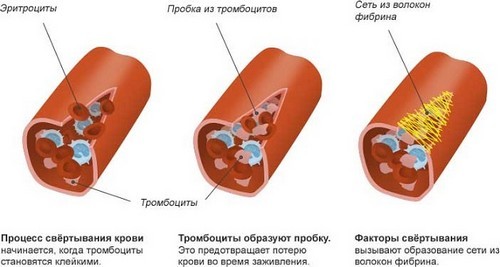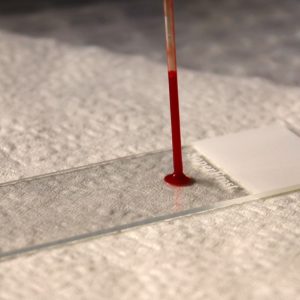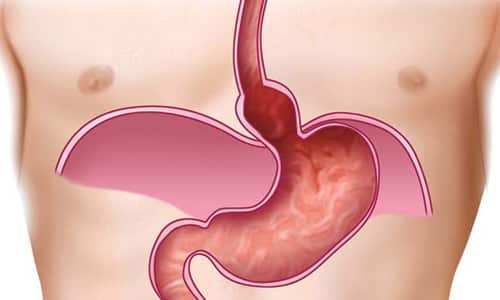Blood coagulation is part of hemostasis is an important physiological system that is responsible for the control of bleeding and preservation of blood fluidity.
And reduction, and increased blood clotting impact negatively on the functioning of the human body, and therefore requires medication. For detection of coagulation disorders conduct special blood tests.
They allow you to identify the fact of deviation from the norm and its possible causes.
What is blood clotting
Blood clotting (coagulation, blood coagulation) is an enzymatic cascade process resulting in the formation of a blood clot in a damaged vessel. The ability of the blood to coagulation is called coagulation.
For a better understanding of tests for blood clotting should be considered, what are the stages of the process of stopping the bleeding.
- In the first stage a damaged vessel spazmiruyutsya to the vascular wall at the site of injury and actively adheres the platelets form a temporary platelet plug. Parallel to the vessel from the surrounding tissues and damaged cells within the vessel begin to stand out the active substances that trigger the next phase of hemostasis.
- The second stage is the coagulation of blood. It is the cascade of chemical reactions (the conversion of prothrombin to thrombin, fibrinogen to fibrin) regulated numerous clotting factors. The end result of coagulation is the formation of a dense clot of fibrin and blood cells (red thrombus) and the full stop bleeding.
- The third stage – dissolution of the thrombus, which occurs after healing of the vascular wall.
The blood coagulation system plays a major role in preventing excessive blood loss. If some element of the process of blood coagulation falls out, you develop a serious disease, associated with increased bleeding tendency. However, if clotting blood is also not very good, because in such cases, the risk of thrombosis and occlusion of intact blood vessels.

When analysis is needed for clotting
Blood clotting is assigned in the following cases:
- If you suspect a coagulopathy – a disease caused by bleeding disorders. This pathology can be congenital, acquired, and autoimmune origin. Manifest coagulopathy with hemorrhage (accumulation of blood in the tissues and body cavities) of different localization and external bleeding, difficult therapy. The most striking example of congenital coagulopathy is hemophilia.
- Before surgery to minimize the risk of complications during the surgery and in the postoperative period.
- During pregnancy – to identify and prevent complications.
- In diseases of the liver. In this organ synthesizes many of the clotting factors, so if the pathology is severe, the patient may have problems in the system of coagulation.
- For cardiovascular diseases, varicose veins. Here doctors will be more interested in not reducing the ability of blood to collapse, but hypercoagulability.
- In autoimmune processes, which often occur with these or other violations of hemostasis.
- Prolonged treatment with drugs that affect the coagulation process of blood.
Methods for the investigation of blood clotting
All methods for the investigation of blood clotting can be divided into those that give a chance to assess the state of coagulation system, and those that help to identify the cause of the pathological state.

Coagulation
An overall assessment of the coagulation system, as a rule, is carried out using a coagulation (gemostaziogramma) – comprehensive test which includes the definition of indicators showing the status of different phases of blood coagulation and possible causes of disorders of hemostasis.
Consider these indicators.
- Prothrombin test. Consists of measuring the activity of prothrombin (70-125%), measurement of prothrombin time (the time during which clots plasma by adding to it a tissue factor of coagulation and calcium; the normal level is 9-12 seconds) and count the SET ratio of the prothrombin time of the patient to the healthy person (normally, this index should not exceed 1). For the prothrombin test is judged on the external path of blood clotting, the launch of which is associated with the contact of inactive coagulation factors with the tissue around the vessel.
- Activated partial thromboplastin time (APTT) – the time of the collapse of the plasma during activation of the intrinsic pathway of blood coagulation (triggered by contact of blood with the destruction of the vascular wall and damaged blood cells). Norma 22-32 seconds.
- Thrombin time – the time during which the fibrinogen is converted into fibrin, forming a blood clot. This indicator is measured by adding plasma to the patient’s thrombin. Norm was 15-20 seconds.
- The concentration of fibrinogen. The blood’s ability to coagulate depends on the fibrinogen content. The normal concentration of this substance in the blood is 1.5-3.8 g/L.
- Antithrombin III activity – inhibitor of most coagulation factors. The lack of this substance occurs thrombosis. The norm is 80-120%.
- D-dimer is a product formed by the decay of fibrin. For this indicator, it is possible to judge the presence of thrombosis and fibrinolysis activity. Rate is up to 0.5 µg/ml.
- The activity of the plasminogen – precursor of plasmin, which triggers the dissolution of fibrin clots, adjusting the intensity of blood coagulation in case of a defect of the vessel. Norma 80-132%.
Given normal values of coagulation may vary in different laboratories – it all depends on the test systems and equipment. So you always need to rely on data specified in form with the result.
In the list of tests performed by laboratories, you can find two types coagulogram – screening and extended. Screening gemostaziogramma includes a basic set of tests – the first four indicators. This test is recommended to take in combination with the clinical analysis of blood (it must be displayed the number of platelets).
In turn , the enhanced coagulation provides the definition of all the indicators listed above. The indication for its implementation is the need for a more detailed assessment of the status of the hemostasis system with suspected thrombophilia (tendency to thrombosis), high risk of development of coagulopathy in severely ill people.
Preparing for a coagulogram is no different from preparing for other similar studies – the patient needs to undergo venous blood in the morning after a full night’s rest, be sure on an empty stomach. In addition, it is desirable to agree in advance with your doctor the need to eliminate the medication, which may affect the result of the analysis.
Other methods for the investigation of blood clotting
In addition to coagulation patients with suspected violations in the hemostatic system is a test of clotting time and duration of bleeding.

The clotting time is determined according to the method of morawica. The material is a drop of blood from finger or ear lobe. Norma – about 5 minutes. This indicator characterizes the coagulation process in General, do not shed light on the mechanisms leading to its violation. The diagnostic value represents the shortening of the coagulation time of blood, which occurs with increased synthesis in the body protrombinazy and the propensity to thrombosis.
The duration of bleeding is measured according to the method of Duque. To do this, the technician pierces the earlobe of the patient with a Lancet and pinpoint the time from the appearance of the first drops of blood to complete the staining of the filter paper, which applies to the injection site. The norm is 2-4 minutes. This value reflects the state of platelet hemostasis, and the ability of vessels to shrink in the injury. If platelets or vessels there are some pathological changes, bleeding time is lengthened.
Tests to identify the causes of hypercoagulability of blood
If the patient has signs of increased blood clotting (formation of clots in undamaged blood vessels), it shows the following studies:
- A blood test for lupus anticoagulant. This substance inhibits the transition of prothrombin to thrombin, that is, it stops blood coagulation (hence the name “anticoagulant”), but only in laboratory conditions. In vivo lupus anticoagulant, on the contrary, increases the risk of thrombosis. Indications for this analysis: a significant increase in APTT, miscarriage, recurrent arterial and venous thrombosis. The norm of this indicator in healthy people it shouldn’t be.
- A blood test for the activity of the protein With one of the most important physiological anticoagulants. This substance limits the size of the thrombus indirectly affects fibrinolysis. The protein is synthesized in the liver and depends on the saturation of the organism with vitamin K. Deficiency of protein is often congenital and manifests itself in high blood clots. The norm for adults is 70-140% for children determined by age.
- A blood test for the activity of protein S – protein that increases the activity of protein C. Deficiency of protein S may be congenital or acquired. The normal value of the indicator depends on the age and sex of the patient.
How much is the blood test for clotting
The value of coagulation screening in private laboratories average 1000-1500 RUB, enhanced with more than 3000 RUB (optional is always paid, the procedure of material sampling). Separately, the study of indicators of coagulation have different prices. The most expensive – it’s the analysis on the activity of proteins C and S (they cost about 2000 RUB).
Where to check blood clotting
Blood clotting can be taken in public and private hospitals with in the structure of the laboratory that possesses the ability to conduct such complex tests. In an ordinary district hospital is unlikely to make an extended koagulogrammou. Before going to the lab be sure to take direction from your physician, as only he can precisely specify what kind of research is needed. In addition, it is necessary to discuss the preparation for giving blood to wrong actions do not reduce the informativeness of the study.


